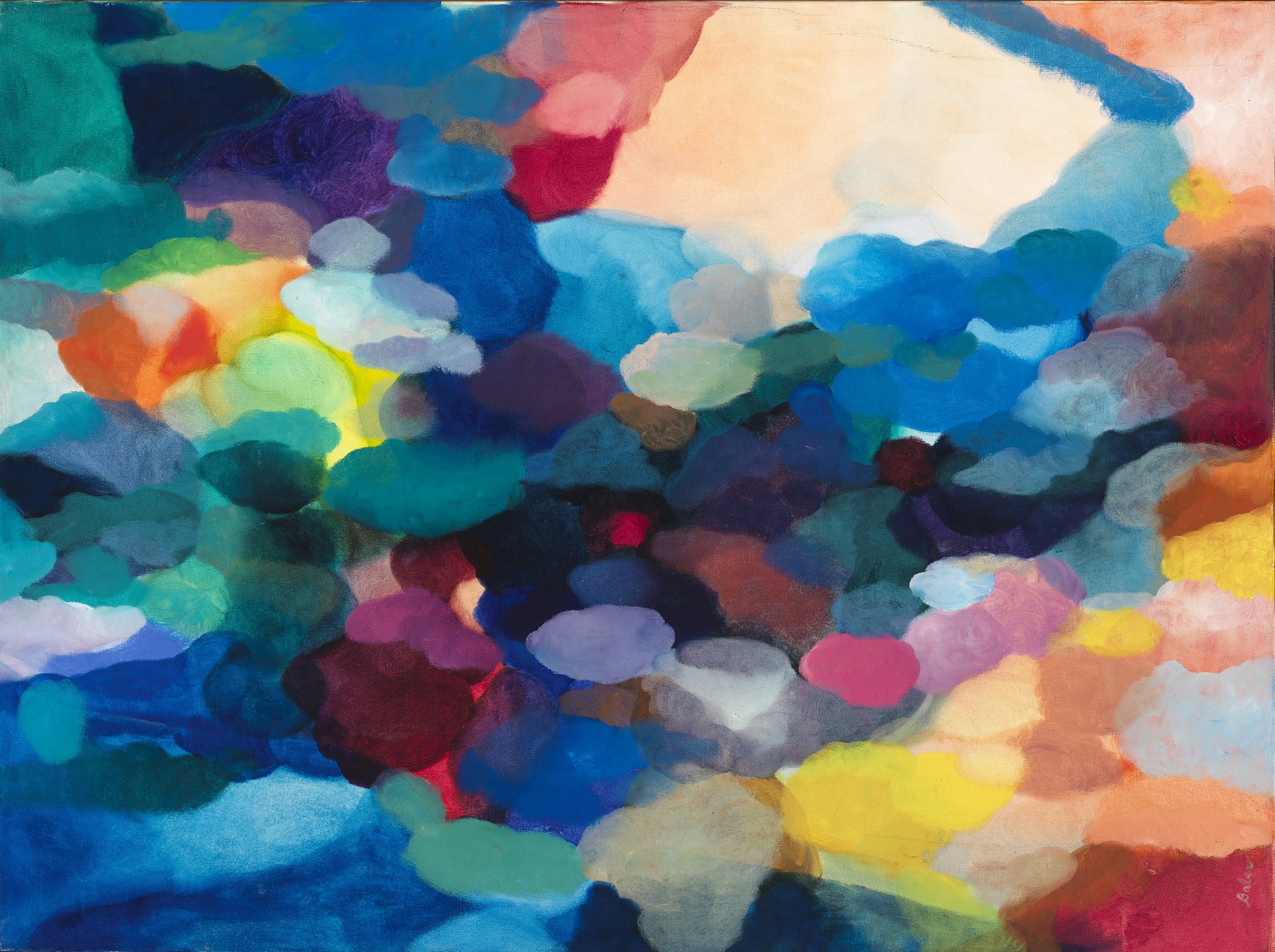Humane Ingenuity 39: A Circle of Keytars
by Dan Cohen
 (Alice Baber, Noble Numbers, 1964-1965, acrylic on canvas, Smithsonian American Art Museum.)
(Alice Baber, Noble Numbers, 1964-1965, acrylic on canvas, Smithsonian American Art Museum.)
The Leventhal Map & Education Center has a new tool called Moviemaps that allows you to pair an explanatory video with a map (or maps) in a separate window, and that can contain hidden triggers within the video that zoom and pan the adjacent map to highlight certain elements. At the same time, viewers can diverge at any time from the guided script to explore the map on their own. It's a good model and a clever use of IIIF (the International Image Interoperability Framework).
Here's a fun, brief introduction by Garrett Dash Nelson, with zooming and snapping hand motions reminiscent of Minority Report:

And here's a fuller example on the history of trolleys in Greater Boston:

Note that this will work for other digital images, not just maps. I can imagine many uses for education and explanatory journalism.
Speaking of journalism: If news is the first rough draft of history, then we are in clear danger of losing that draft, and with it, considerable knowledge. This fact is made clear in a new report from the Donald W. Reynolds Journalism Institute at the University of Missouri.
There currently is no clear pathway from the systems holding born-digital news content today to some version of publicly accessible archives of the future. It does seem apparent from this study that, despite many risks and challenges, contemporary news content is still valued enough to not be deleted. The window of opportunity for long-term preservation is still open for a great deal of born-digital news content, but that opportunity will not last indefinitely.
As Richard Ovendon makes clear in his outstanding recent work, Burning the Books: A History of the Deliberate Destruction of Knowledge, we can lose precious texts through conscious neglect, not just events like the devastating fire that destroyed the University of Cape Town's library last month.
The report underscores how news now largely originates in complex and precarious back-end platforms—often a "headless CMS," or a content management system that reporters and editors work in—and from which a newspaper's website or app is rendered on the fly, with completely separate code.
The report also makes clear that we can't simply rely on the Internet Archive to save the news for the future. IA's web crawler can only save publicly accessible URLs and even then only every so often, and given how much more is in the headless CMS and how many news orgs increasingly gate their content, so much is already being, or will be, lost.
I like the conclusion of the report, which is similar to what the Perma project has done in the legal realm with digital content that is linked to from court decisions: proactively create an alliance between news organizations and libraries, which can act as trusted long-term repositories for the full content of the CMS.
My household's favorite song from the Eurovision contest this year was Iceland's Daði og Gagnamagnið's "10 Years."

Their performance featured an iconic moment when they combined their three arc-shaped keytars into a joyous synth circle:

A short documentary about how they crafted the keytars made me like the band even more, revealing a dual passion for high-tech electro pop and low-tech woodworking methods.

 (Roger Brown, Natural Bridge, 1971, oil on canvas, Smithsonian American Art Museum.)
(Roger Brown, Natural Bridge, 1971, oil on canvas, Smithsonian American Art Museum.)